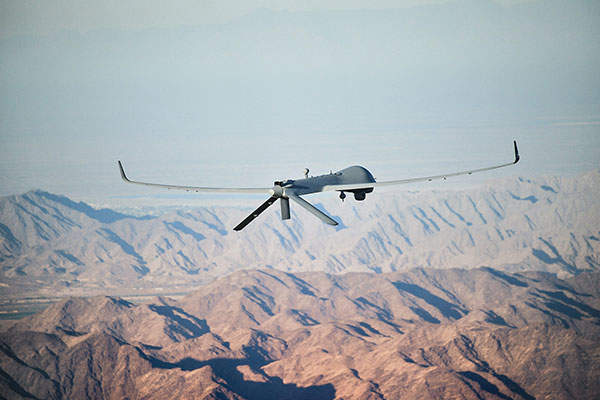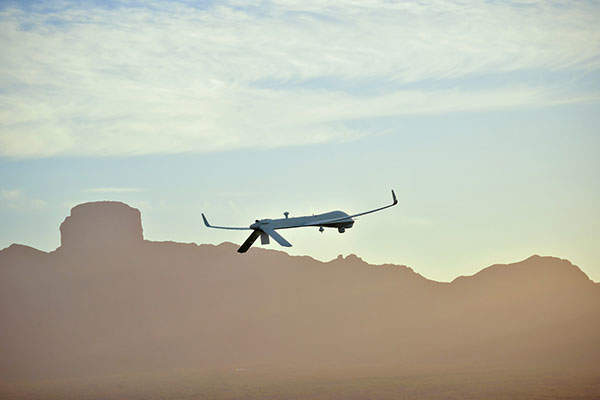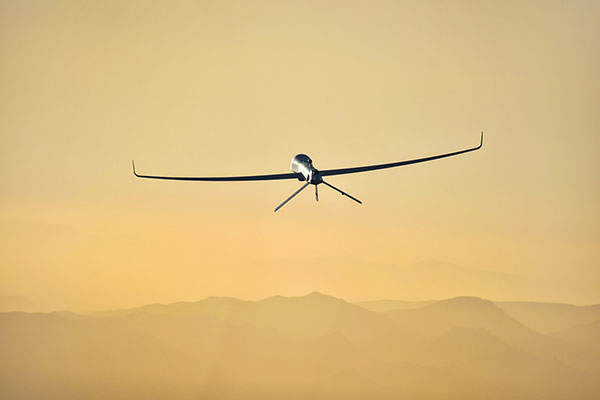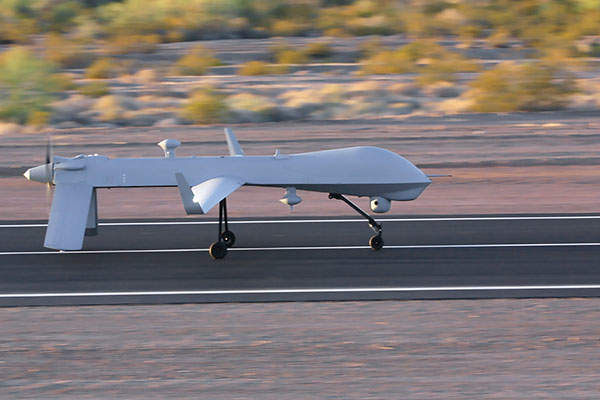
Predator® XP is an advanced version of the MQ-1 Predator remotely-piloted aircraft (RPA) being produced by General Atomics Aeronautical Systems (GA-ASI) to provide air forces with increased surveillance capabilities. The first Predator XP production aircraft is scheduled for delivery in 2016.
The aircraft is intended to perform search and rescue, over-the-horizon operations, and medium-altitude intelligence, surveillance and reconnaissance (ISR) missions over land and sea. Its advanced features include automated take-off and landing capability, improved avionics, and redundant flight controls.
The US Government issued GA-ASI a license for sale of the new Predator XP RPA to a broader customer base, including regions in the Middle East, South America and North Africa.
Development and flight tests of Predator XP
The Diamond DA42 Centaur Optionally Piloted Aircraft (OPA) was designed and manufactured by Aurora Flight Sciences, and is intended for military.
GA-ASI signed a memorandum of agreement with International Golden Group (IGG) in February 2011 to export its Predator XP RPA for surveillance needs of the UAE Government. The contract negotiations between the UAE Air Force & Air Defence and International Golden Group (IGG) were completed in February 2013.
The Predator XP RPA’s full-scale mock-up was exhibited at the IDEX 2013 International Defence Exhibition & Conference held in Abu Dhabi, UAE.
GA-ASI is also in discussions with Tawazun Economic Council and other companies based in Abu Dhabi on the formation of a joint venture (JV) for providing long-term service and support for Predator XP RPA in the country.
First flight of the Predator XP aircraft took place at the Castle Dome Heliport located at Yuma Proving Grounds, Arizona, in June 2014. The 35-minute flight, funded by GA-ASI, demonstrated the aircraft’s take-off and landing capabilities, climb-to-operational altitude, and its complete basic airworthiness manoeuvres.
A production representation of the Predator XP aircraft made first endurance flight at GA-ASI’s Castle Dome Flight Operations Facility in February 2015. It was flown for more than 40 hours at an altitude of 10,000ft during the flight.
Design and features of the remotely-piloted aircraft system
The aircraft features upturned winglets, providing increased performance by reducing drag. It is 8m-long and measures 17m in wing span. It can carry multiple payloads weighing up to 147kg.
An automatic take-off and landing system (ATLS) enables the aircraft to perform autonomous take-off and landing operations with a retractable tricycle landing gear system.
The aircraft’s sensor payloads can be controlled using GA-ASI’s Claw® integrated sensor payload control and analysis software. Featuring moving-map displays, Claw® supports pre-mission planning and cross-cueing of sensors. It is also used for post-mission analysis and exploitation of the sensor data.
Sensors onboard Predator XP
The Predator XP RPA is integrated with triple-redundant flight control computers, enhanced avionics, satellite communications (SATCOM) data link, redundant flight control surfaces, and multiple ISR sensors. Its automatic identification system (AIS) is intended for use in maritime patrol missions. A state-of-the-art electro-optical / infrared (EO/IR) full-motion video camera, mounted under the nose, gathers intelligence data.
The aircraft is equipped with GA-ASI’s Lynx® Multi-mode Radar featuring Ground / Dismount Moving Target Indicator (GMTI), Synthetic Aperture Radar (SAR), and Maritime Wide Area Search (MWAS) modes.
The GMTI mode facilitates quick location of moving vehicles, while the SAR mode allows acquisition of high-resolution imagery over a wide area under difficult weather conditions during day and night operations. The MWAS mode supports a variety of maritime missions including long-range and coastal surveillance, search and rescue, drug interdiction, and small target detection.
The aircraft also features line-of-sight (LOS) as well as beyond-line-of-sight (BLOS) data link systems for secure transmission / reception of imagery, video and telemetry data in over-the-horizon operations.
Predator XP’s engine details
The remotely-piloted aircraft’s power plant consists of heavily modified four-cylinder, four-stroke, liquid / air-cooled Rotax 914 turbo-charged engine, with a capacity of 115hp. It has a maximum gross take-off weight of 1,157kg and a fuel capacity of 270kg.
Performance
The Predator XP RPA has a maximum air speed of 120kts and can fly to a maximum altitude of 25,000ft. It can remain airborne for up to 35 hours when flying at a height of 10,000ft above mean sea level.






